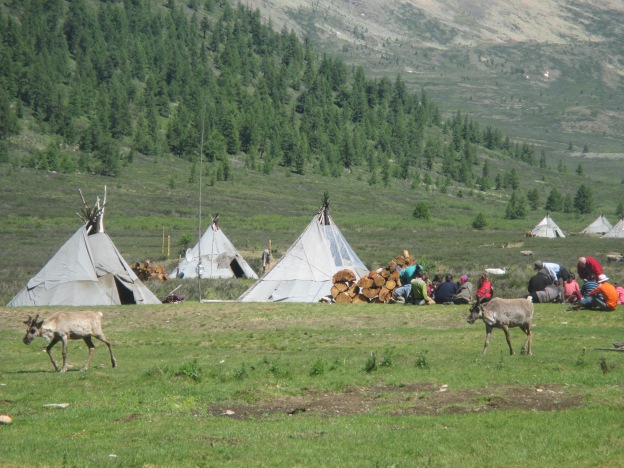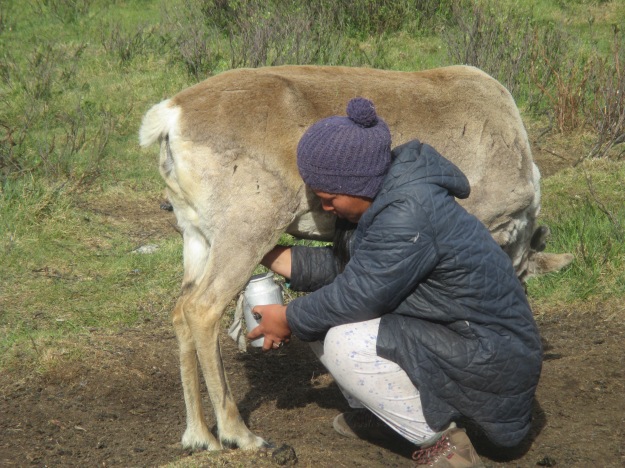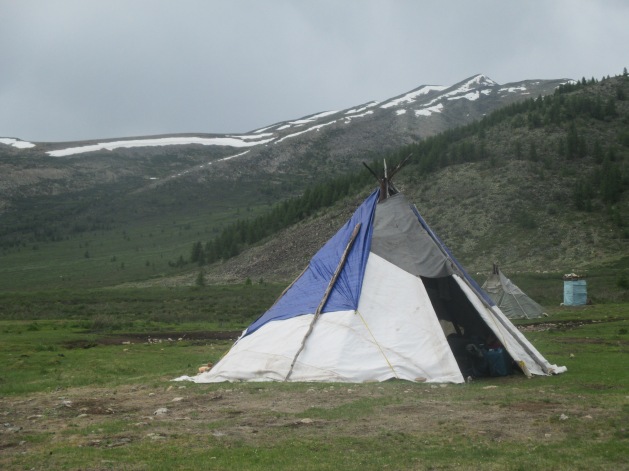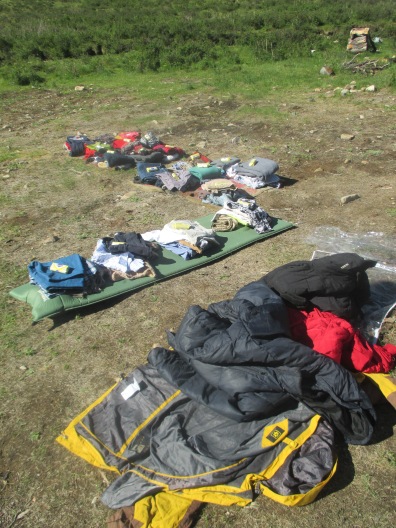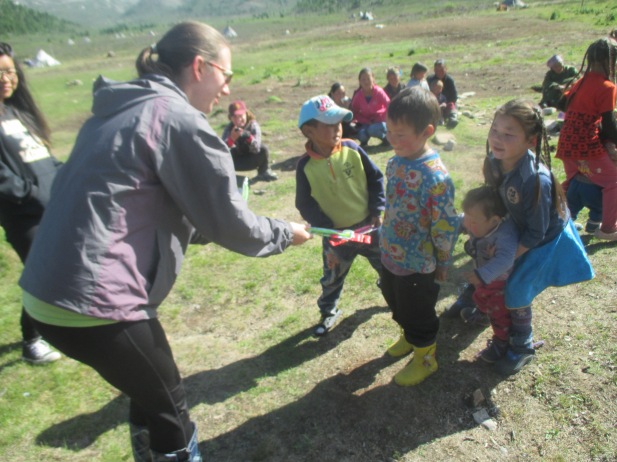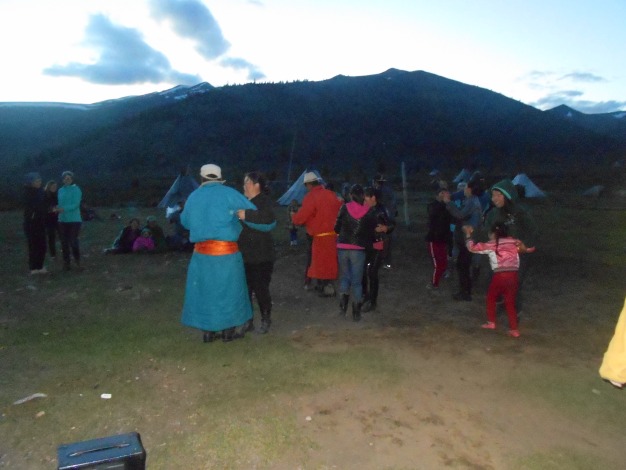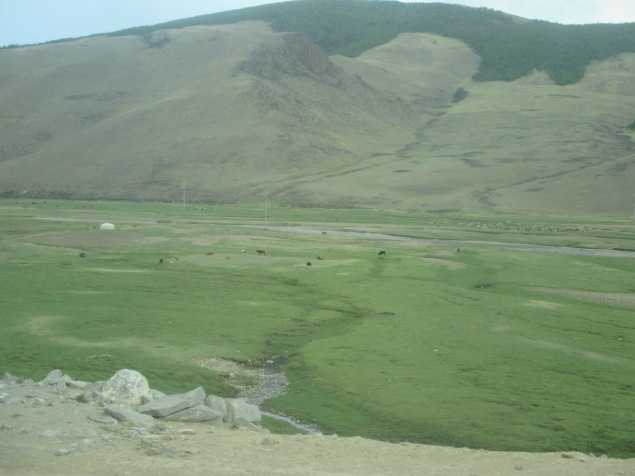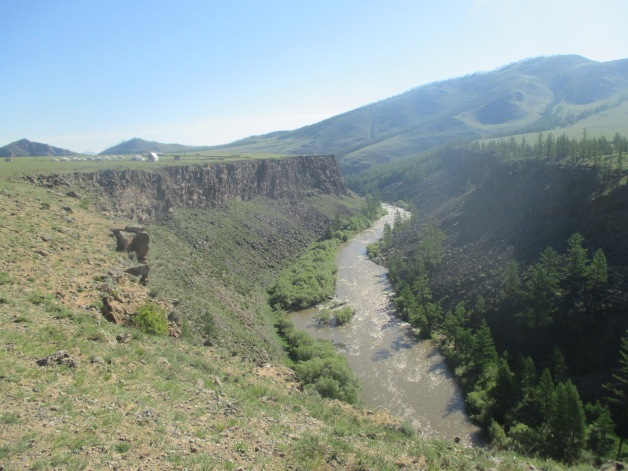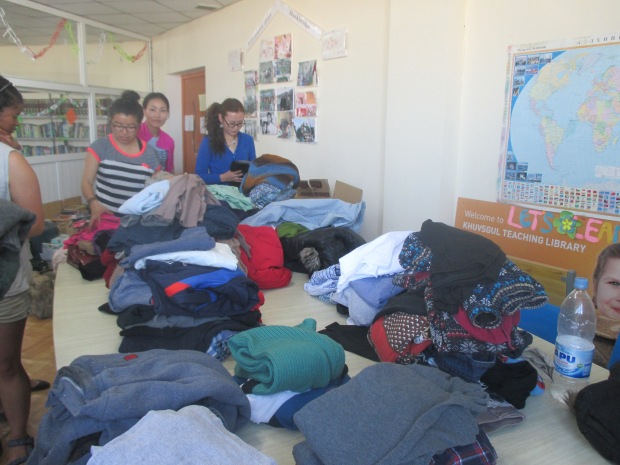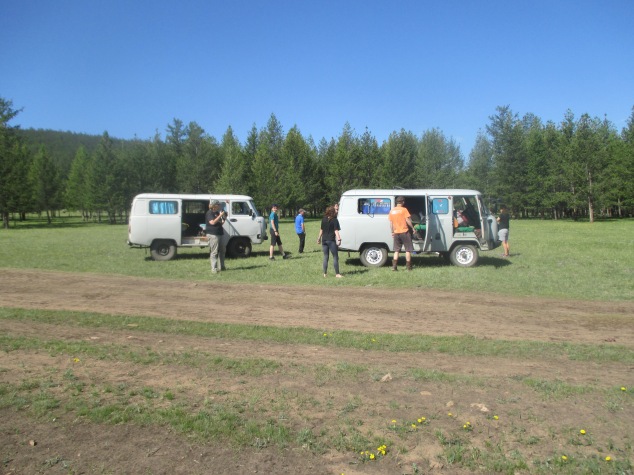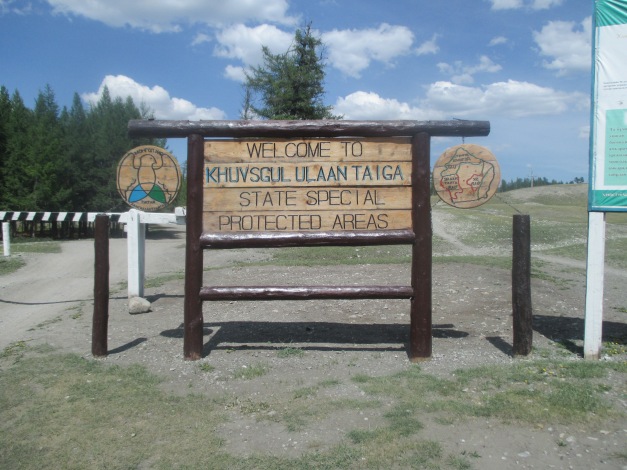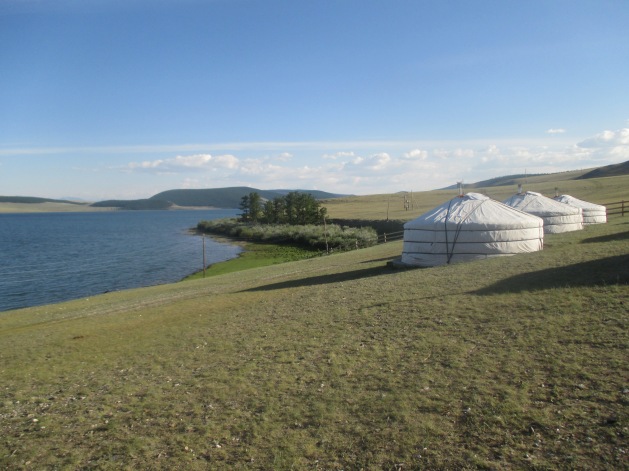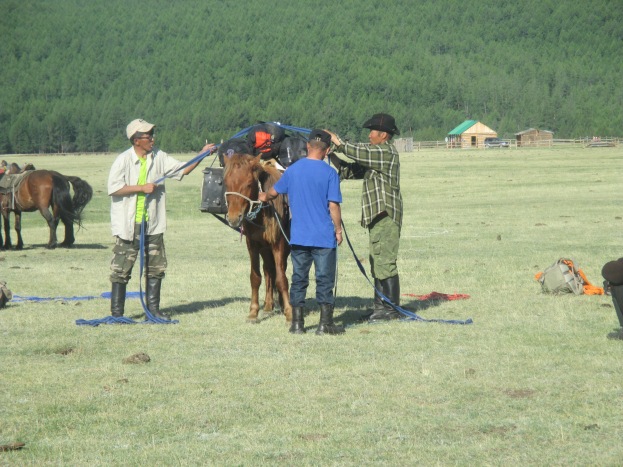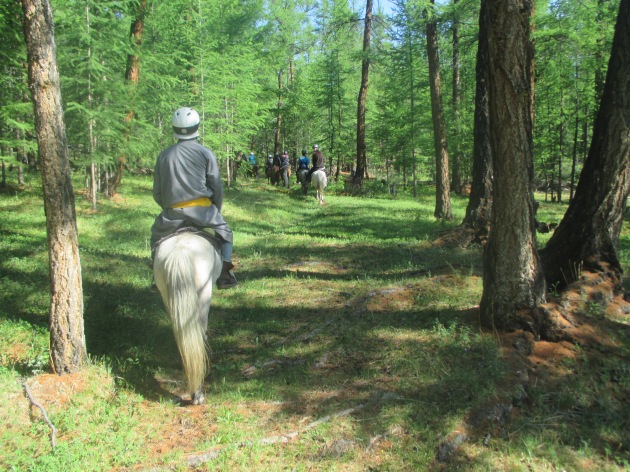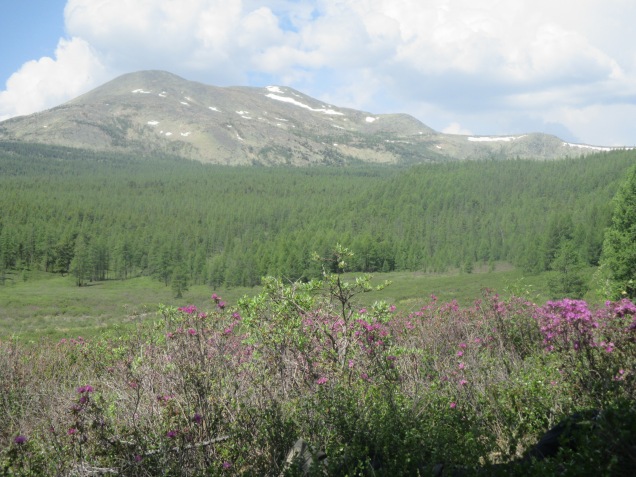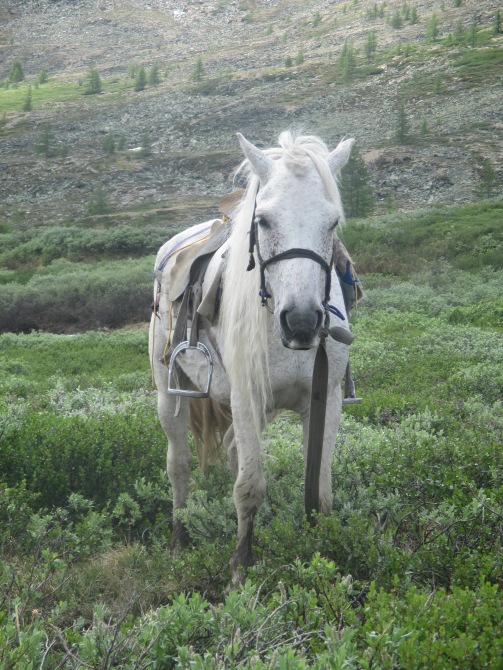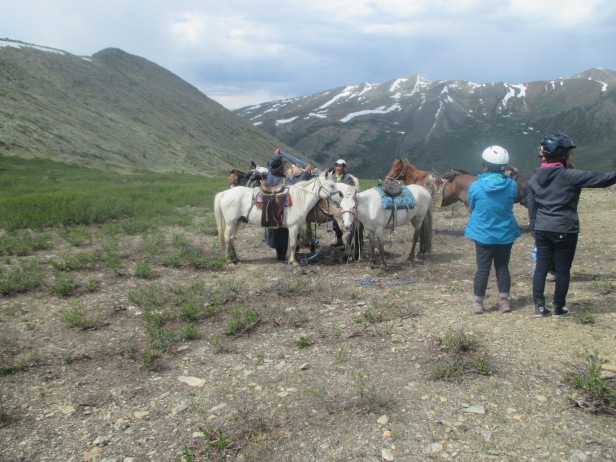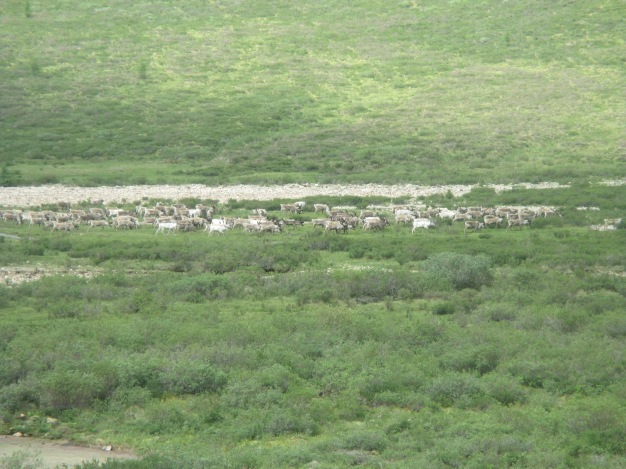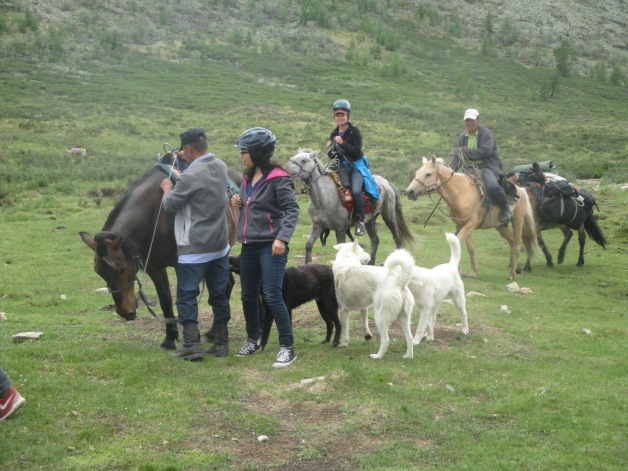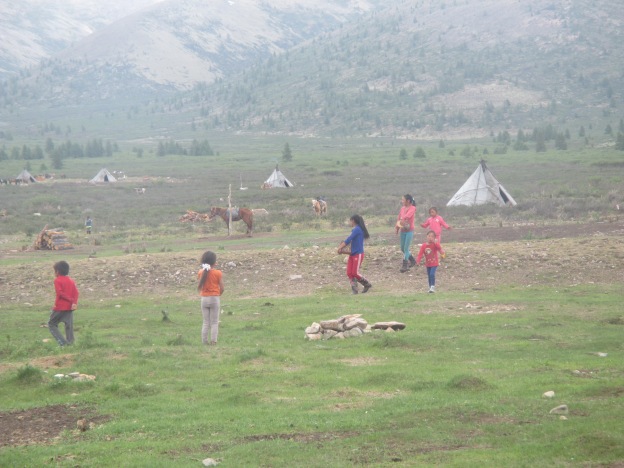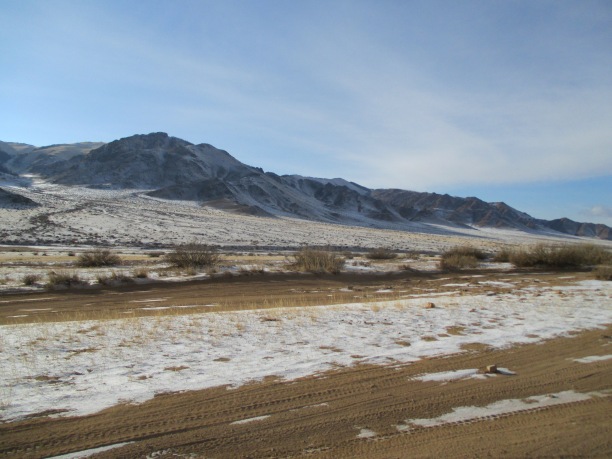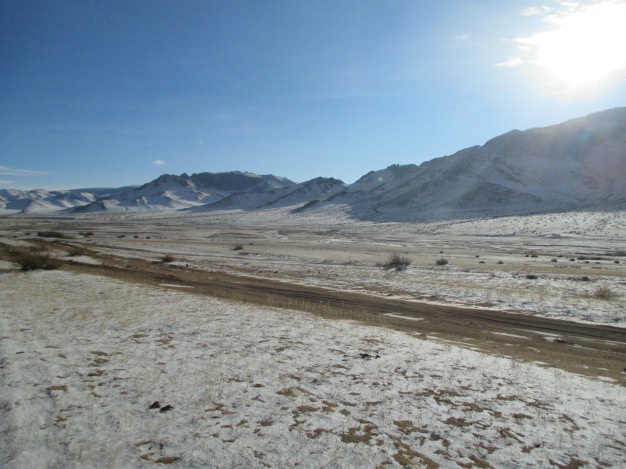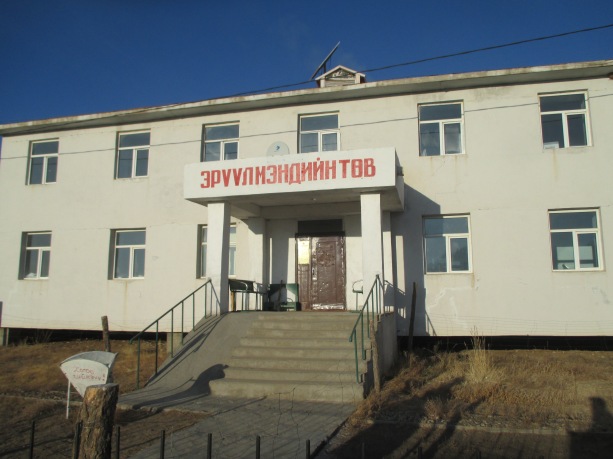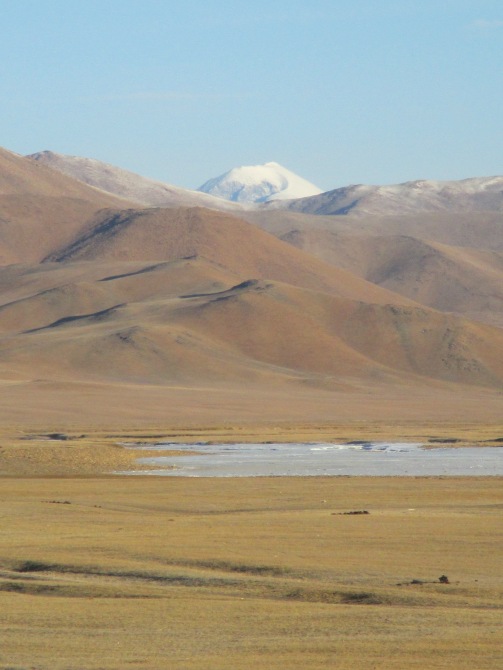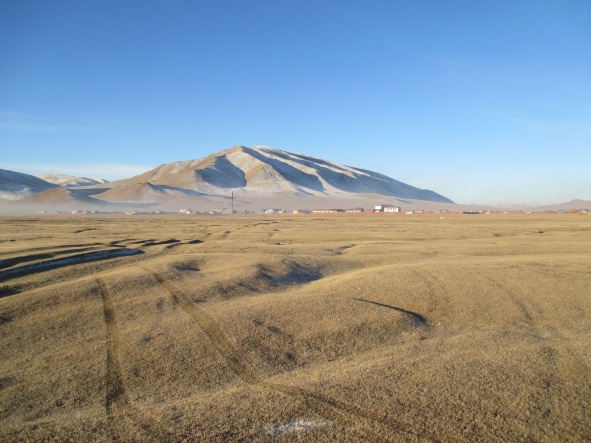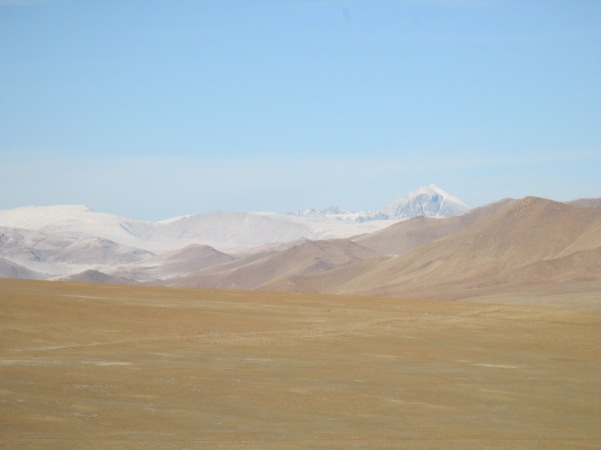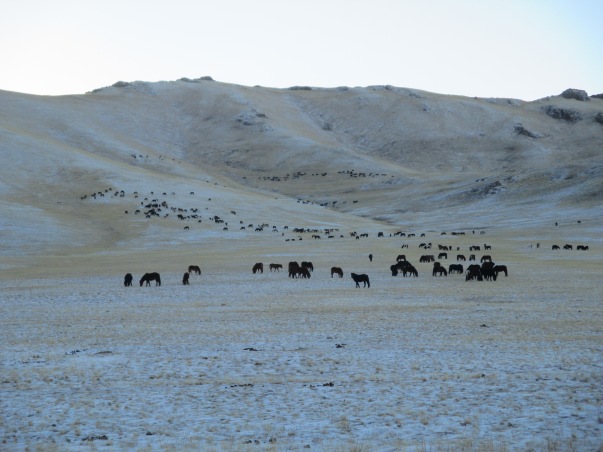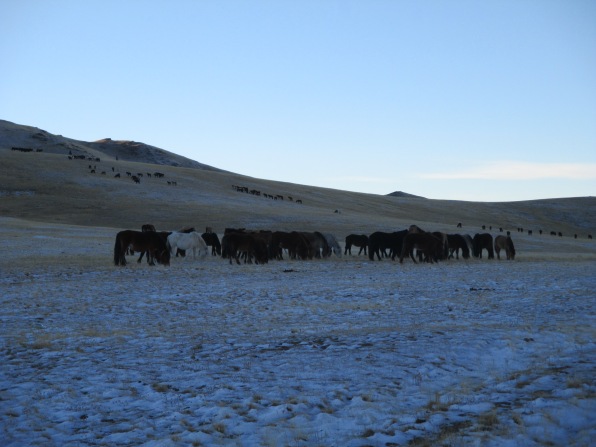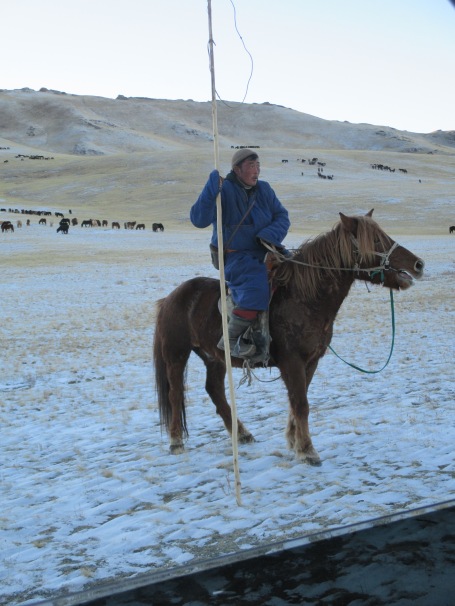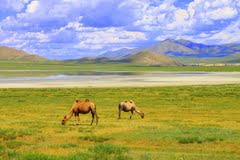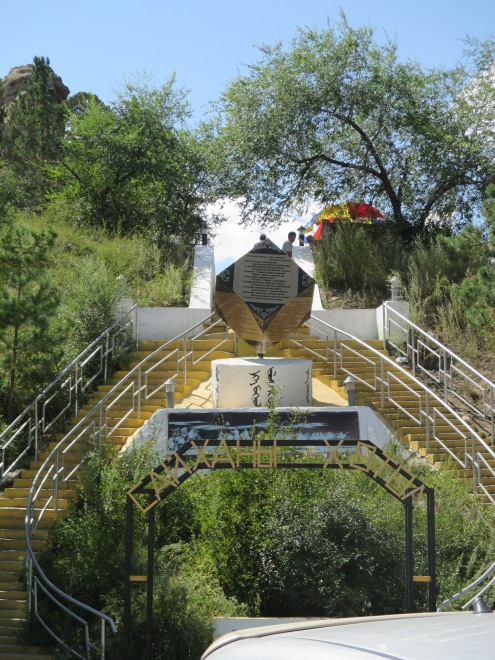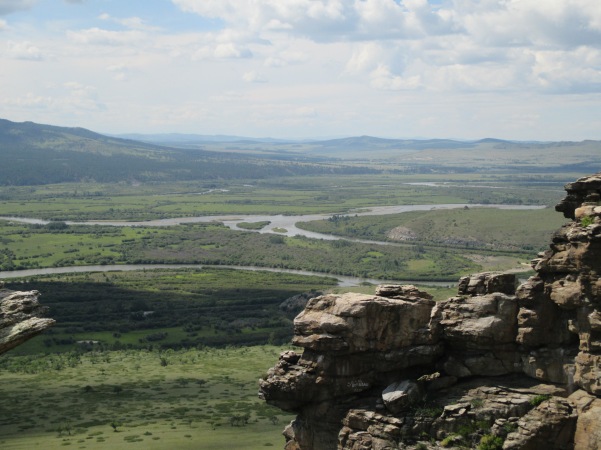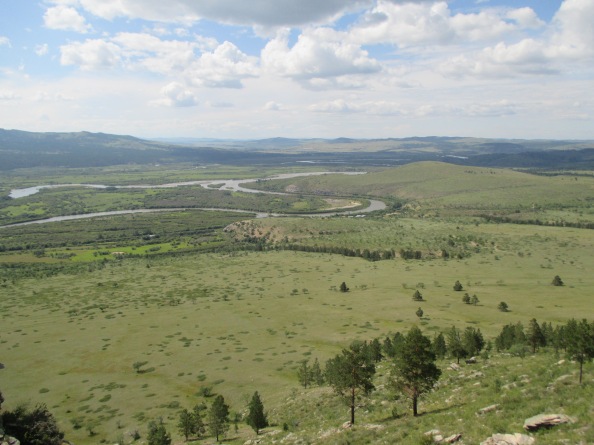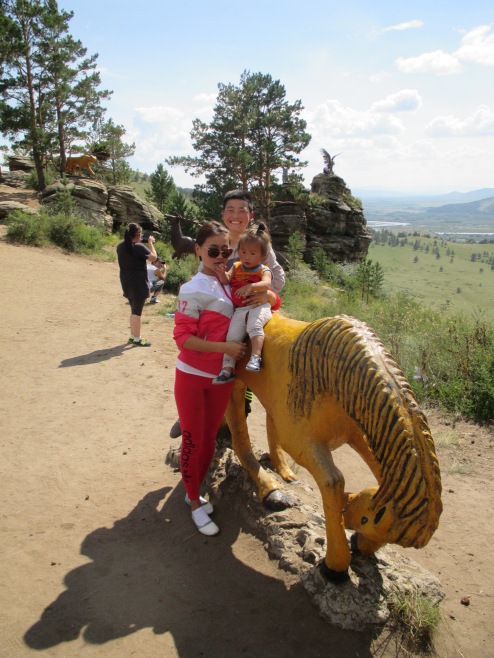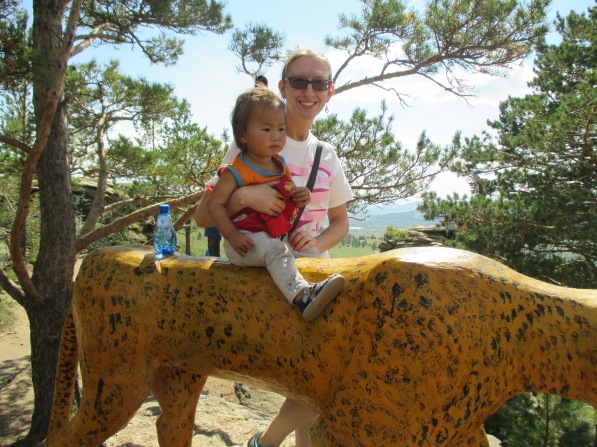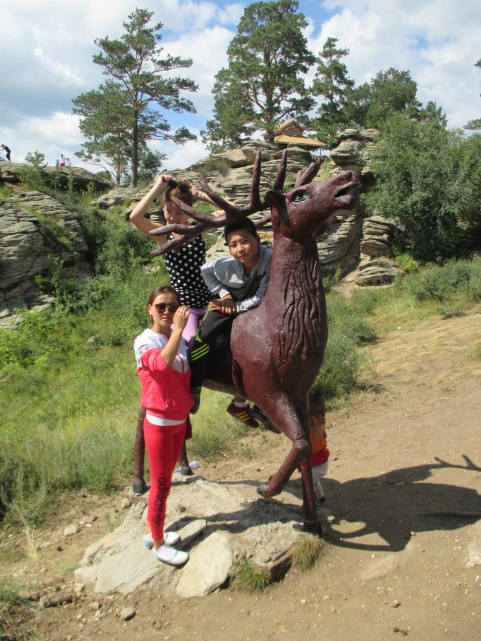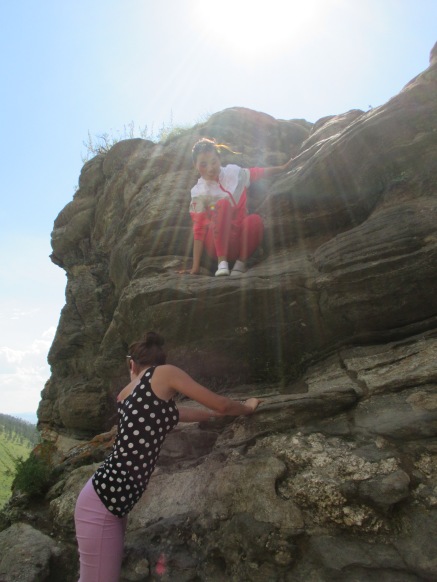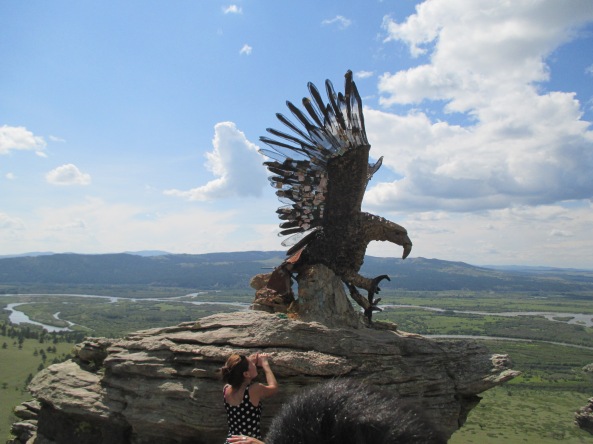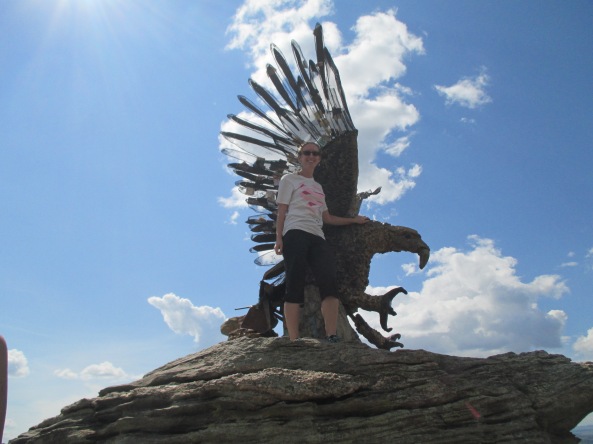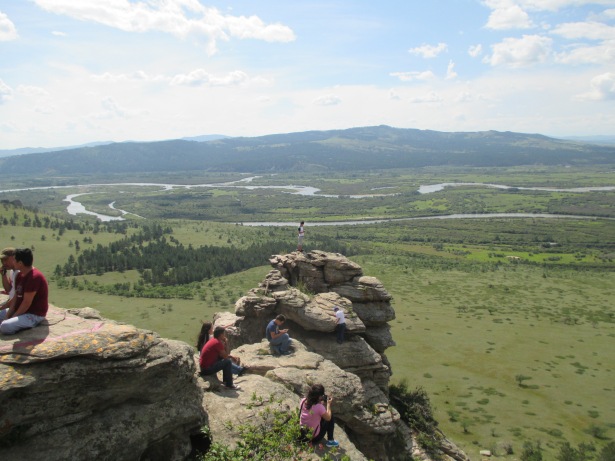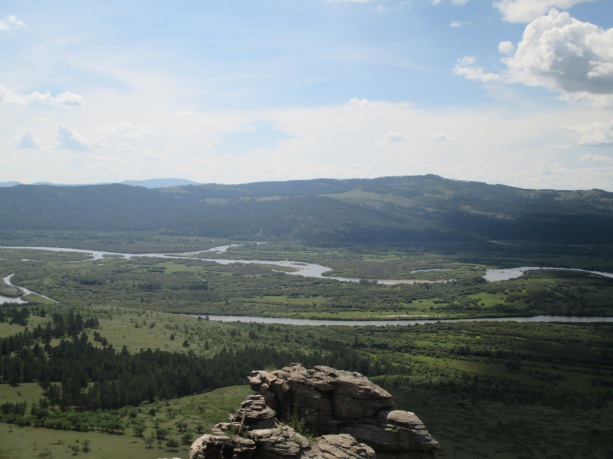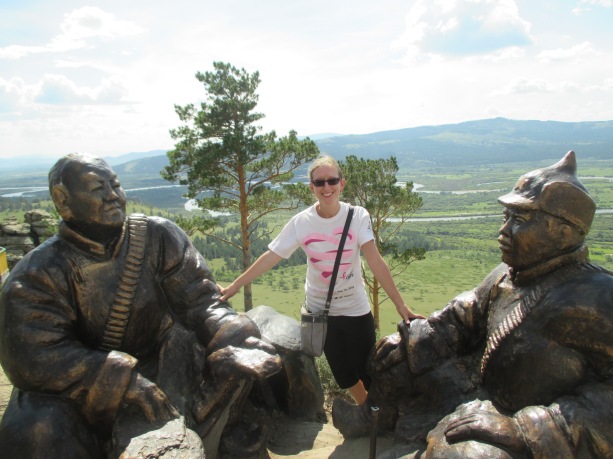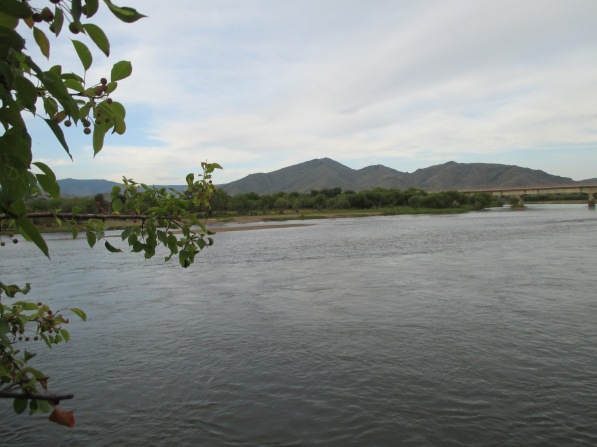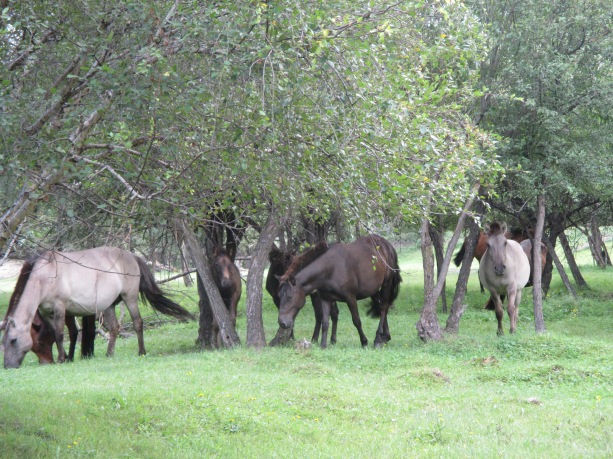After several days of traveling by bus, purgon, and horse, we had arrived at the East Taiga reindeer herders’ summer camp.
The East Taiga, which is north of Tsagaannuur and close to the Russian border, is home to about 20 reindeer herding families and roughly 150 reindeer. There are many more herders and reindeer in the West Taiga, which is more spread out, but in all, Mongolia has less than 300 people who identify as Dukha (Tsaatan) and only about 650 domesticated reindeer.
The Dukha are nomadic herders who live and travel in small communities. Their reindeer are central to their lives and each day is structured around all the chores necessary to care for the reindeer. At the camp we stayed at, the herders tied up the adult reindeer near their teepees* during the night, while the babies were allowed to run free.

And munch on lichen
Then at 6 in the morning, the women would wake up and go set the adult reindeer free and tie up the babies. During the day, the women made milk tea, yogurt, and cheese from the reindeer milk.
These dairy products make up a large portion of their diet, which they supplement with meat from wild animals they hunt in the forest (they only kill the reindeer for meat if they are very old or sick). During the day, they also gather firewood and keep track of where the reindeer are grazing. In the evening, the herders would go out and herd the reindeer back into the camp, milk the mothers, and set the babies free again.
The Dukha teach their children at a young age how to care for the reindeer: children learn to ride the reindeer very early and help with the herding, and girls help their mothers milk the reindeer.
Many families with children move to Tsagaannuur during the school year (or at least for the winter) so that they can be closer to their children, who go to the school in Tsagaannuur.
For more detailed information about the Dukha, you can check out this publication, Changing Taiga: Challenges for Mongolia’s Reindeer Herders.
During our stay, we each slept at a different host families’ teepee, but had our own teepee for cooking our meals and planning/holding our lessons.
Our teepee had a dirt floor, 2 wooden beds/benches, and a wood burning stove. We were told to hang all the bags of food because the camp dogs might come into our teepee and rummage through the bags. We got all our water from the river, which was conveniently only 30 feet from our teepee. There was no electricity. We went to the bathroom in the bushes, etc., etc., and all the other hardcore camping stuff.
Our first full day at the camp, a group of kids popped over by our teepee, so we decided to go ahead and start our activities. We told them to go get all the other kids so we could do our morning stretches/exercises. Throughout the morning and early afternoon, we had kids dropping by.
We played games with them outside, but then it rained for several hours, so we had the kids come inside our teepee and draw and talk about themselves.

Later in the day, a few of us went on a hike just outside the camp.

In the evening, the kids came back and we played more games.
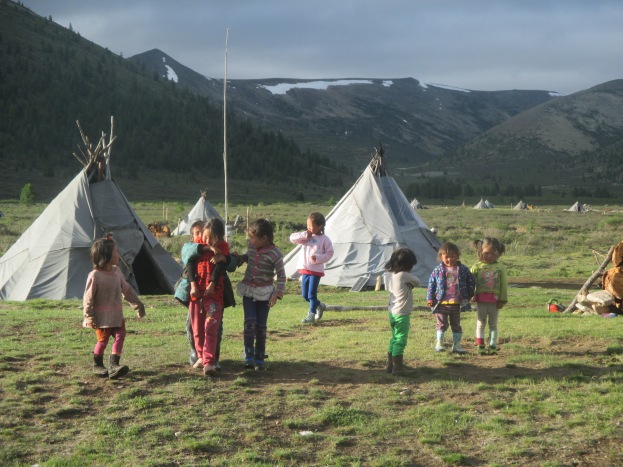
The next day the weather was much nicer, so we had our meeting with everyone in the camp to discuss why we were there and to distribute our donations (clothes, soap, toothbrushes, and toothpaste).
That afternoon, some of the boys wanted us to go with them to their watering hole for a swim. We decided it was too cold to do much more than wade, but we watched the boys playing around for a bit.
Then they took a couple of us on a hike up a very steep, rocky mountain. But it was worth it because we got an amazing view of the entire valley and their camp.
That evening, we did some teamwork exercises disguised as relay races (ok, so we were really just having them do relay races for fun, but I’ve got to make it sound like we did actual work, right?)
The next day John (the other Health PCV) and I did a lesson with the kids on nutrition (while also incorporating some English), where we discussed the different food groups in a “food teepee”:
Other activities we did included English lessons, toothbrushing, origami, making friendship bracelets, and just playing with the kids (running around outside is exercise, so that counts as a health session, right?). But it was often difficult to gather people for sessions: the adults were working most of the day and groups of kids would go off fishing or something. And when we did have kids, there was often a wide range of ages: the older kids knew some English (and were eager to learn more) while the younger ones didn’t know any, making it difficult to have one lesson at a time. It’s also difficult to lead a health session for a group of kids between the ages of 3 and 16.
On our last full day at the camp, we went with some of the herders and the older kids to move rocks from the path that leads from the camp up the mountain, as the rocks are bad for the horses to walk on (you may remember us having to get off the horses and walk down the mountain when we arrived at the camp).
And because we all wanted the chance (and photos!) to ride a reindeer, we went to our host families to ask if we could ride one:

This reindeer decided to run through half the camp with me on his back before I could get him to stop
Then in the evening, we had a talent show, where the kids performed songs and dances they had prepared for us. The talent show eventually turned into a dance party, until it was too late (and too cold) to go on.
The next morning is when we departed the camp, which I’ll talk about in my next post.
*I call them teepees, though the correct term is ortz (or chum in parts of Russia).
By the way, I took a few videos during the trip that have now been uploaded to my YouTube channel if you want to check them out.

